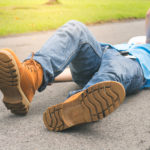
Some people are prone to fainting and others have never fainted.
If a patient is lying flat, they are much less likely to faint. Often the first sign that a patient may faint is their change in colour. Their skin will appear pale, cold and sweating and they may have a slow pulse. They may then become light-headed and pass out. Sometimes there is very little warning that someone will pass out.
The patient may say they do not feel well or they may say they feel sick.
Once the person has fainted, they usually recover quickly. Raise their legs 15-30cm to give more blood to the brain and tell them to rest. Keep them warm and calm. Avoid overcrowding them and ask people to move away. If inside, open a window to allow fresh air in.
Recovery times vary from person to person but do not rush them. Once they feel better and when they are ready, allow them to slowly get up in stages. If they get up too quickly, they may faint again.
As the patient recovers quickly, it is not usually necessary to call the Emergency Services but you may have to call a family member to escort them home or allow them to rest somewhere.
Regular fainting may be the result of an underlying health concern so it is worth seeing a Doctor if this happens regularly or you are concerned. If someone does not regain responsiveness again quickly, treat as if they are unresponsive and place in the recovery position monitoring their breathing.
For more information on First Aid training courses visit ProTrainings website.